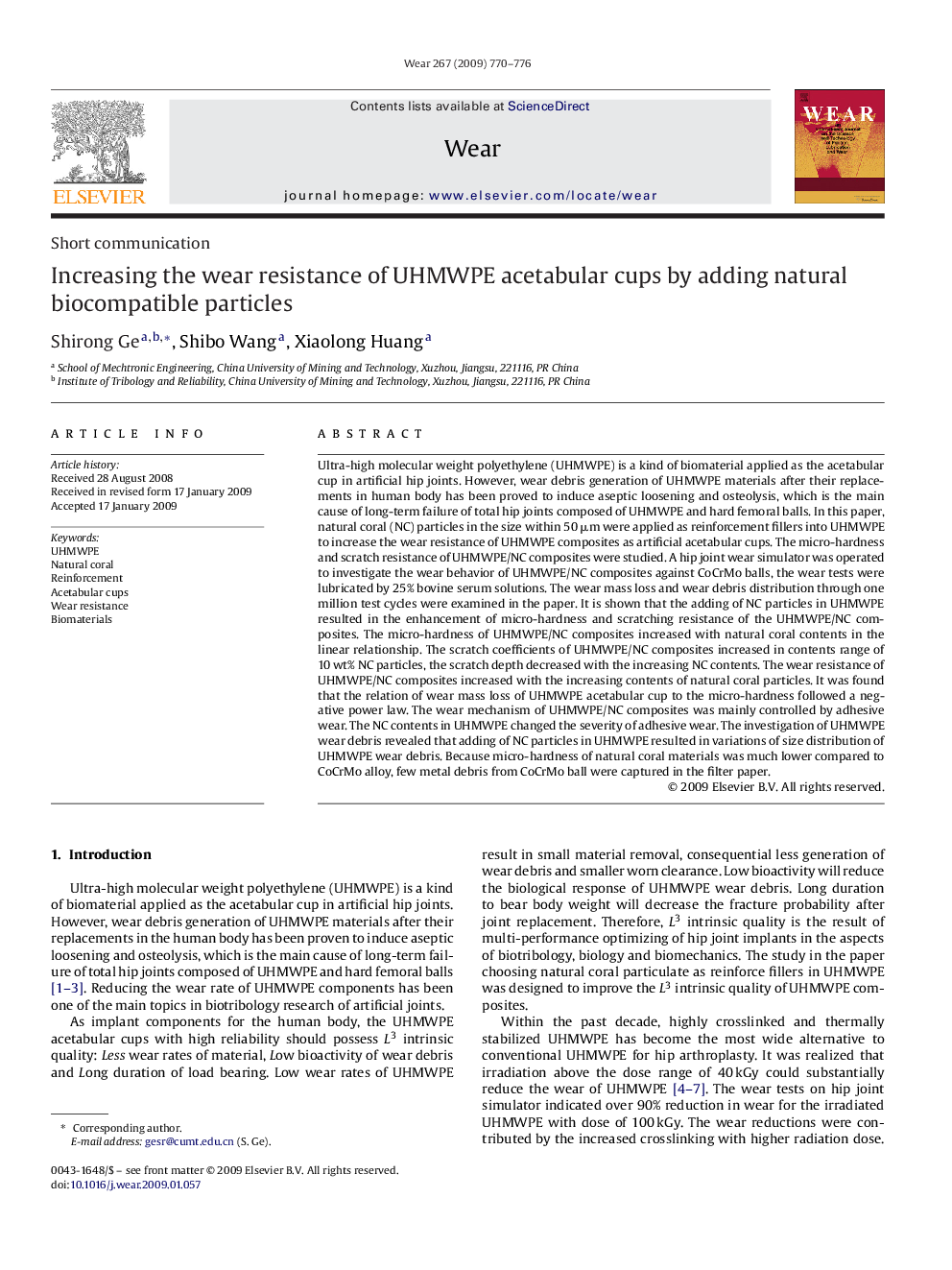| Article ID | Journal | Published Year | Pages | File Type |
|---|---|---|---|---|
| 619328 | Wear | 2009 | 7 Pages |
Ultra-high molecular weight polyethylene (UHMWPE) is a kind of biomaterial applied as the acetabular cup in artificial hip joints. However, wear debris generation of UHMWPE materials after their replacements in human body has been proved to induce aseptic loosening and osteolysis, which is the main cause of long-term failure of total hip joints composed of UHMWPE and hard femoral balls. In this paper, natural coral (NC) particles in the size within 50 μm were applied as reinforcement fillers into UHMWPE to increase the wear resistance of UHMWPE composites as artificial acetabular cups. The micro-hardness and scratch resistance of UHMWPE/NC composites were studied. A hip joint wear simulator was operated to investigate the wear behavior of UHMWPE/NC composites against CoCrMo balls, the wear tests were lubricated by 25% bovine serum solutions. The wear mass loss and wear debris distribution through one million test cycles were examined in the paper. It is shown that the adding of NC particles in UHMWPE resulted in the enhancement of micro-hardness and scratching resistance of the UHMWPE/NC composites. The micro-hardness of UHMWPE/NC composites increased with natural coral contents in the linear relationship. The scratch coefficients of UHMWPE/NC composites increased in contents range of 10 wt% NC particles, the scratch depth decreased with the increasing NC contents. The wear resistance of UHMWPE/NC composites increased with the increasing contents of natural coral particles. It was found that the relation of wear mass loss of UHMWPE acetabular cup to the micro-hardness followed a negative power law. The wear mechanism of UHMWPE/NC composites was mainly controlled by adhesive wear. The NC contents in UHMWPE changed the severity of adhesive wear. The investigation of UHMWPE wear debris revealed that adding of NC particles in UHMWPE resulted in variations of size distribution of UHMWPE wear debris. Because micro-hardness of natural coral materials was much lower compared to CoCrMo alloy, few metal debris from CoCrMo ball were captured in the filter paper.
